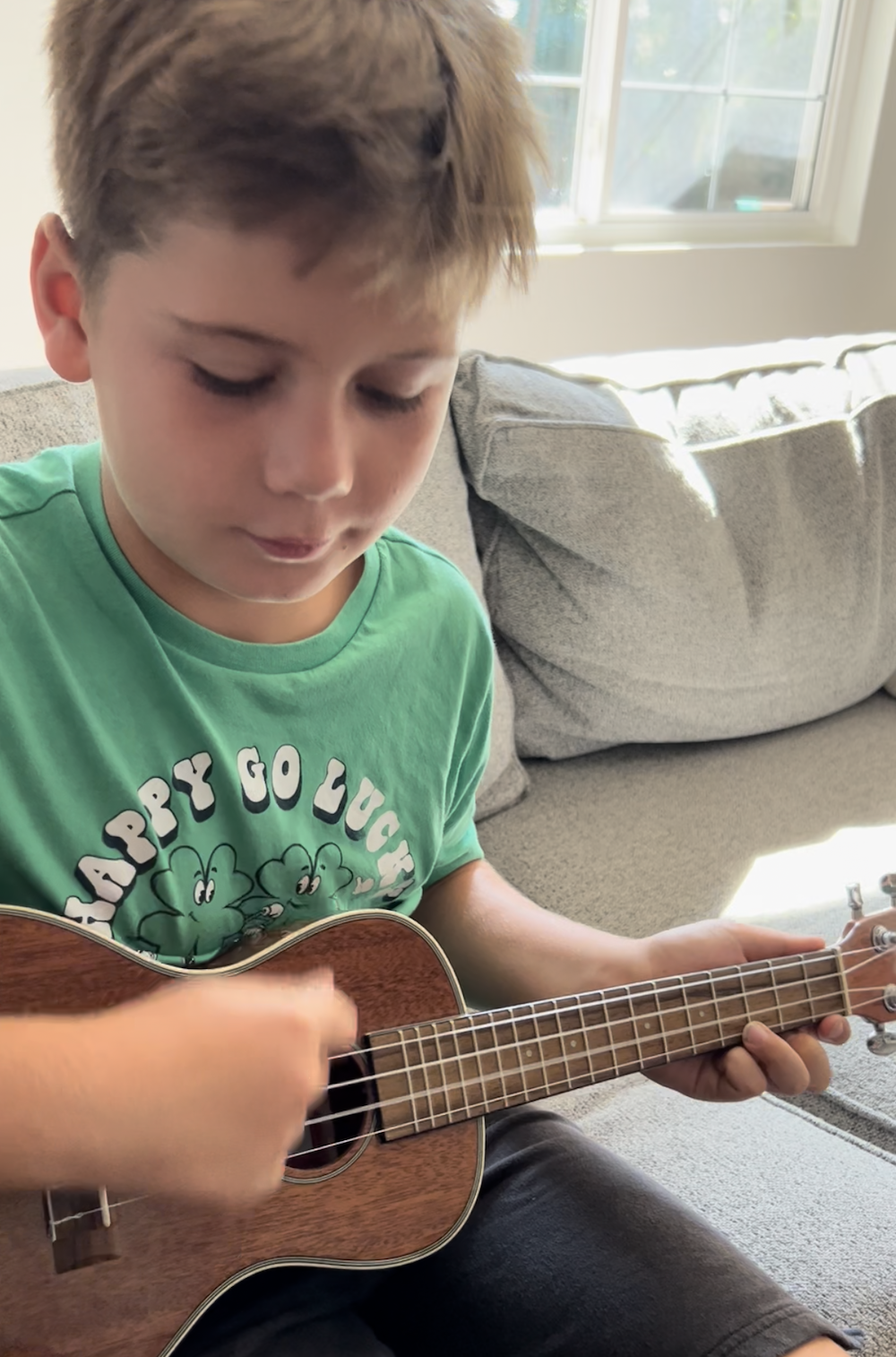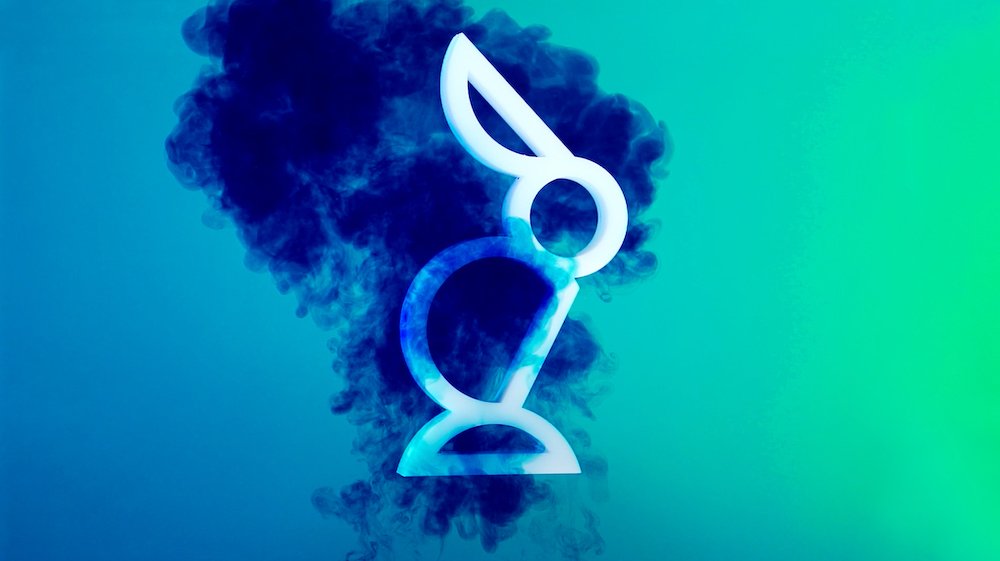Why Being a Kid Again Unlocks Our Creative Bravery
Greg Gibson and his family spend some quality time together in nature. Images: Greg Gibson
We were all born as creative geniuses, at least according to a NASA report. In a longitudinal test of creative potential, the study found that of 1,600 4- and 5-year-olds, 98 percent scored at "creative genius" level. When the same test was administered to adults, however, it was found that only two percent scored at this genius level. What the heck happened? According to the study, our creativity is drained by our education. As we learn to excel at convergent thinking–or the ability to focus and hone our thoughts–we squash our instinct for divergent, or generative, thought. But our childlike wonder, imagination, and passion to create doesn’t go away.
For Greg Gibson, CCO at design agency Grizzly, those feelings are inspired by his son who, when he saw the Golden State Warriors logo, had a lightbulb moment and realized that people “draw” logos. Greg’s son realized that if someone else could draw a logo, he could too. “It was inspiring him to create and design other things in his head,” says Gibson. “The context of something he loves and talking about the work I do, helped him see that design is everywhere around us, shaping our experience.”
As adults, we tend to approach creativity with bias, often unknowingly. However, the world around us has been designed to push us toward conformity. When we remove expectations and process from creativity, Gibson saw how we can find new ideas and unlock the joy we experienced as kids. “Creativity is simpler than we all make it out to be and my kids are a reminder to connect back to that energy,” he says. Here, Gibson shares how we can apply the best of our childhood attitudes to our work today, ways to incorporate more play into our professional lives, and why the last thing anyone should think about this is that it’s childish.
When we view the world with a childlike wonder, it helps us to think outside-the-box.
What happened to our creativity between our childhood and professional years? And how do we bring it back to our professional lives?
What happens is many of those things that we did as children–thinking about your idea going right instead of wrong, for example–get beat out of us over time by society, school, potentially our parents or other people in our lives.
Here is a tactical way we can bring it back: I was with a client the other day to kick off a project. We had their whole creative marketing team, including the CMO. This is probably one of the few times the entire team is together, so we had to break down roles and titles and put people together who don’t normally work together on their individual teams.
We were trying to solve some specific problems, so we began by giving them a bunch of magazines, scissors and some glue sticks. We said to use them to tell the story about your brand. You’ll be amazed at the creativity that comes out of them through exercises like this.
It builds shared purpose between people because everyone is on the same playing field. It removes them from hierarchy. And it's just play. Play, using different modalities of creativity, enables us to get back to how we thought when we were a kid.
It is easy to dismiss this as childish, but the stories that they told at the end of the day were powerful, showed depth of understanding of a product that they were talking about, and could be translated into technical content and cultural programs. All from a collage made out of random magazines that we grabbed at the airport.
No hesitations…children just pick up a guitar and play.
How does an exercise like this allow us to act in different ways?
When we gave them a tool they are not used to, it forced them out of the way they normally solved the problem. If we had them use a blank Google Doc, we would not have gotten what we got. It's about taking us away from our habits and routines.
It’s also an activity that is bound by time. The expectations are clear and the participants only have a certain amount of time to make something. You’re forced to work with other people so there is mutual accountability. Lastly, there is a level of comfort knowing that others are experiencing the same level of discomfort and newness that you are.
The logo concept for Microsoft’s Everyday Magic team is a bunny designed out of geometric shapes.
Can you share a client example of this working out?
We worked on an internal project with Microsoft five years ago, a branding initiative for their internal teams working on augmented reality and 3D initiatives. We did these exercises with them, but then also took a tactical approach to how we built the identity.
The team was called Everyday Magic and we had this logo concept around a bunny built out of geometric shapes. We gave the entire team the same kit of cutout geometric shapes and told them to make as many animals or objects as they could with these shapes–there were five or six. Every time they made one, we had them take a picture of it. We then took them and turned them into a flexible logo. It was a bunny hopping, but it could also be a dog. This channeled the team’s creativity through play and was appropriate for a team that worked on 3D and the future.
The rabbit represented the idea of everyday magic, and we showed that they can turn it into anything as an expression of someone's creativity.
Do professionals ever look at something like this activity and feel it’s childish?
Yeah, for sure. But when you think about creative effectiveness, the riskiest thing we could do is not take any risks. I think similarly about being outside your comfort zone, especially when we were kids making, playing, and experimenting. Not doing this is probably more risky than letting yourself just go there.
I don’t think I’ve ever seen a child get creative block. They just create. What else can we learn from them?
The scariest part of all of our work is the starting point. But kids often don’t think, This task is so big, or What happens if I don’t get it done? They just dive in. Putting ourselves in that place will help us get through the scariest part of the work, which is removing the constraints of, I don’t know if I know how to get my project all the way there.
One other noticeable thing about kids. They love the activity itself–the making, creating, imaginative play. When my kids play with LEGOs, it’s less about the end outcome and instead it’s about the process. When they're drawing, they just love the act of drawing. We have to enjoy the process and not be so quick to get to the outcome.
How does the positive mindset of, This thing will work out, help us?
It allows us to tap into the purity of our ideas. Many times when we think all the way through something we tell ourselves that it can never happen. There's no budget for that. Or there’s no time for it. Or the client won’t like it. Or it’s too risky. Then we don't get to the point where we actually express what our idea is. We don’t even let ourselves travel down that path.
But if we think it will go right, we let the constraints that are normally placed on us melt away. Our mind goes toward the path of what our idea is. When Einstein thought about his experiments, he often looked at them like it was a dream: What if I could travel on a beam of light? We have to ask ourselves questions that aren’t always logical.
How do we nurture our children so they have a lifelong love and appreciation for creativity?
First, create space for it. Make sure that your children have the tools and encouragement around them to do that. That they're able to find joy in it. As they grow older, provide them with examples of how creativity can continue to show up in their life. Allow them to be inspired by the things they find on their own, culturally and socially. Then show them how other people in the world use their creativity. Communicate what you do because I think children take these things for granted. The whole point of life is to create and do things that have meaning. Foster that.
If you’d like to read more from The Creative Factor, sign up for our newsletter.
Plus, check out the following pieces:




